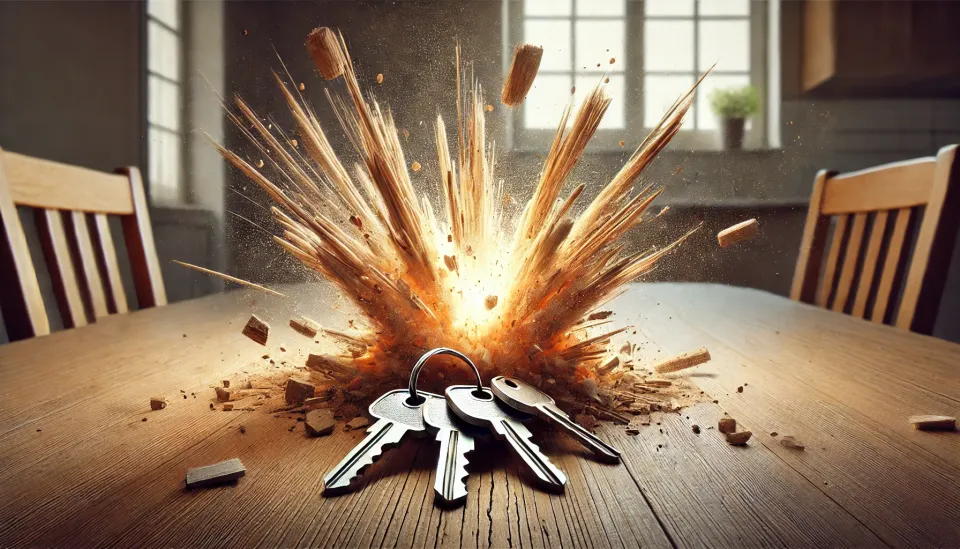Peg: The Ultimate Tool to Quickly Memorize Lists

Would you like to discover a simple technique to help you memorize lists or organize information more effectively? Today, we’ll explore the Peg System, a foundational method that becomes incredibly powerful when combined with other memory techniques. It’s an ideal tool for enhancing your learning skills and taking the first step toward building a stronger and more efficient memory.
The Peg System involves associating images with specific anchors and reinforcing them with an emotional or sensory "glue." This technique not only helps you recall individual pieces of information but is also excellent for studying more efficiently and memorizing ordered lists, making it easy to identify which item is in a specific position. It's the foundation for building a stronger, more organized memory!
Key Elements of the Peg System
The Peg System is based on three fundamental elements:
- Anchor: A reference point where you "hang" the information. It can be a place, a number, an object, or any other concept that feels familiar to you.
- Image: A mental representation of what you want to remember. The more vivid and absurd, the better for your memory.
- Connection or Glue: A strong link that ties the image to the anchor. This glue can be an intense emotion, a sensory experience, a humorous scene, or an unexpected action.
The key to studying with this technique is creating images that are as impactful and memorable as possible. Let me give you a concrete example.
Where Did I Leave My Keys?
Have you ever left your keys somewhere without paying attention, only to forget where they are later? For example, you walk into a hotel room and absentmindedly place your car keys somewhere.
With the Peg System, you can avoid this problem by creating a vivid image while placing your keys. For instance, imagine that as you set your keys on the table, the table suddenly explodes!
Let’s break it down step by step:
- Anchor: The table where you place your keys.
- Image: Your keys, the item you want to remember. Visualize clearly how the keys cause an explosion when they touch the table, complete with smoke, sparks, and noise.
- Glue: The explosion. It’s unexpected and dramatic, making it impossible to forget.
Later, when you try to recall where your keys are, the image of the explosion will immediately come to mind, guiding you straight to the table.
Practical Example: Memorizing a Shopping List
Now that you understand how it works, let’s apply the Peg System to memorize a shopping list. We’ll use the numbers 1 to 5 as anchors, associating them with the basic association technique:
- 1: Unicorn.
- 2: Swan.
- 3: Trident.
- 4: Chair.
- 5: Hand.
Our shopping list is: Bread, milk, eggs, bananas, and coffee. Here’s how to remember it, adding glue to reinforce the associations:
- 1 (Unicorn): Imagine a magical unicorn taking a huge bite of a loaf of bread, but it chokes on a hard piece. Coughing frantically, it spits the bread through its horn like a catapult.
- 2 (Swan): A graceful swan is swimming slowly in a lake of milk, but as it moves, it starts splashing milk everywhere, creating drops that sparkle like tiny pearls.
- 3 (Trident): A golden trident pierces three giant eggs. The sticky, gooey egg whites drip slowly down the trident’s prongs, creating a slightly gross but unforgettable image.
- 4 (Chair): Imagine a wooden chair where each leg is smashing a banana. Picture the soft, squishy texture of the bananas being crushed against the chair legs, making a mess as the chair creaks with each movement.
- 5 (Hand): A hand is holding a huge cup of coffee. The cup is so oversized that the hand trembles as it lifts it, tilting dangerously while the hot coffee threatens to spill everywhere.
Notice how I used the glue here, creating unlikely scenarios like a lake of milk or a banana squished under a chair. It’s the tiny details, like the swan splashing milk drops or the sticky texture of the banana, that connect both items together. These vivid and absurd images are what make the memories stick, almost as if they were real experiences.
Test Your Memory!
Remember, it’s not about reading the words—it’s about visualizing the scenes. Visualize the five scenarios above, then take a 5-minute break.
Now, try to recall which item from the list corresponds to each position in this order: 3, 1, 4, 2, and 5.
If you remember eggs, bread, bananas, milk, and coffee, you’ve mastered this Peg System example!
Practical Tips for Mastering the Peg System
- Exaggerate the images: The more vivid and unique, the better. This naturally enhances your memory.
- Use strong glue: Add intense emotions, absurd scenes, or sensory details to reinforce the connections.
- Practice regularly: Apply the technique to everyday situations, such as studying or remembering a to-do list.
- Review your associations: Repetition strengthens your memory and makes the connections last longer.
Conclusion
The Peg System is an incredibly effective technique for improving your memory, memorizing lists, and studying more efficiently. It’s a foundational step for exploring more advanced methods, like the Body List, techniques for remembering names, or the Memory Palace.
Start with simple examples like the ones we covered today, and don’t stop practicing. You’ll be amazed at what you can achieve!
On your journey to a better memory, you can count on me, the Memory Geek, to unlock Your Memory Power, One Technique at a Time!